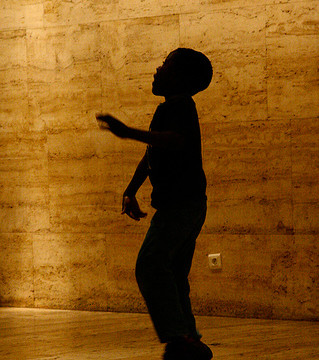BLACK BOYS IN CRISIS: IS PUNISHMENT TOO HARSH?

It’s no secret that Black men are considered the trouble makers of society. In America’s prison systems, black citizens are incarcerated at six times the rates of white ones – and the NAACP predicts that one in three of this generation of Black men will spend some time locked up.
Do these numbers tell the true story though? Are Black men inherently more dangerous than their white and Hispanic peers – or are they the products of racial profiling and a society that sets them up to fail?
In the first part of this series I looked at the connection between low reading ability and a lifetime of struggle for Black young men in the U.S., but today I want to focus on a non-academic area that impacts this group in childhood: punishment that begins in K-12 classrooms.
Troubling Stats in Schools
Nearly 75 percent of all schools in the U.S. report at least one violent incident in their schools each year, but that number rises to 82 percent for schools with a majority of Black students. Though Hispanic boys are the most likely to be involved with gang activity at school, it is certainly an issue for Black boys too – with 31 percent of students nationwide reporting seeing Black gang activity in their schools. Violence is just one part of the criminal side of K-12 hallways, though. There are also higher numbers of non-violent crimes, like theft, in schools where more students are Black than any other race.
All of that being said, there still IS violence in schools where Black students are the minority, and committed by non-Black students. Yet, over and over again statistics show that punishment for Black boys – even first-time offenders – in schools is harsher than any other demographic. Consider these facts:
• Black students make up just 18 percent of children in U.S. preschools, but make up half of those youngsters who are suspended.
• Black boys receive two-thirds of all school suspensions nationwide – all demographics and both genders considered.
• In Chicago, 75 percent of all students arrested in public schools are Black.
• Black boys receive two-thirds of all school suspensions nationwide – all demographics and both genders considered.
• In Chicago, 75 percent of all students arrested in public schools are Black.
Also troubling is the fact that not all of the Black boys taken from their schools in handcuffs are violent, or even criminals. Increasingly, school-assigned law enforcement officers are leading these students from their schools hallways for minor offenses, including class disruption, tardiness and even non-violent arguments with other students. It seems that it is easier to remove these students from class through the stigma of suspension or arrest than to look for in-school solutions.
Minnesota civil rights attorney Nekima Levy-Pounds writes that “it is a continual affront to the human dignity of Black Boys in Crisis: Is Punishment Too Harsh? | The Edvocate:
Minnesota civil rights attorney Nekima Levy-Pounds writes that “it is a continual affront to the human dignity of Black Boys in Crisis: Is Punishment Too Harsh? | The Edvocate:
